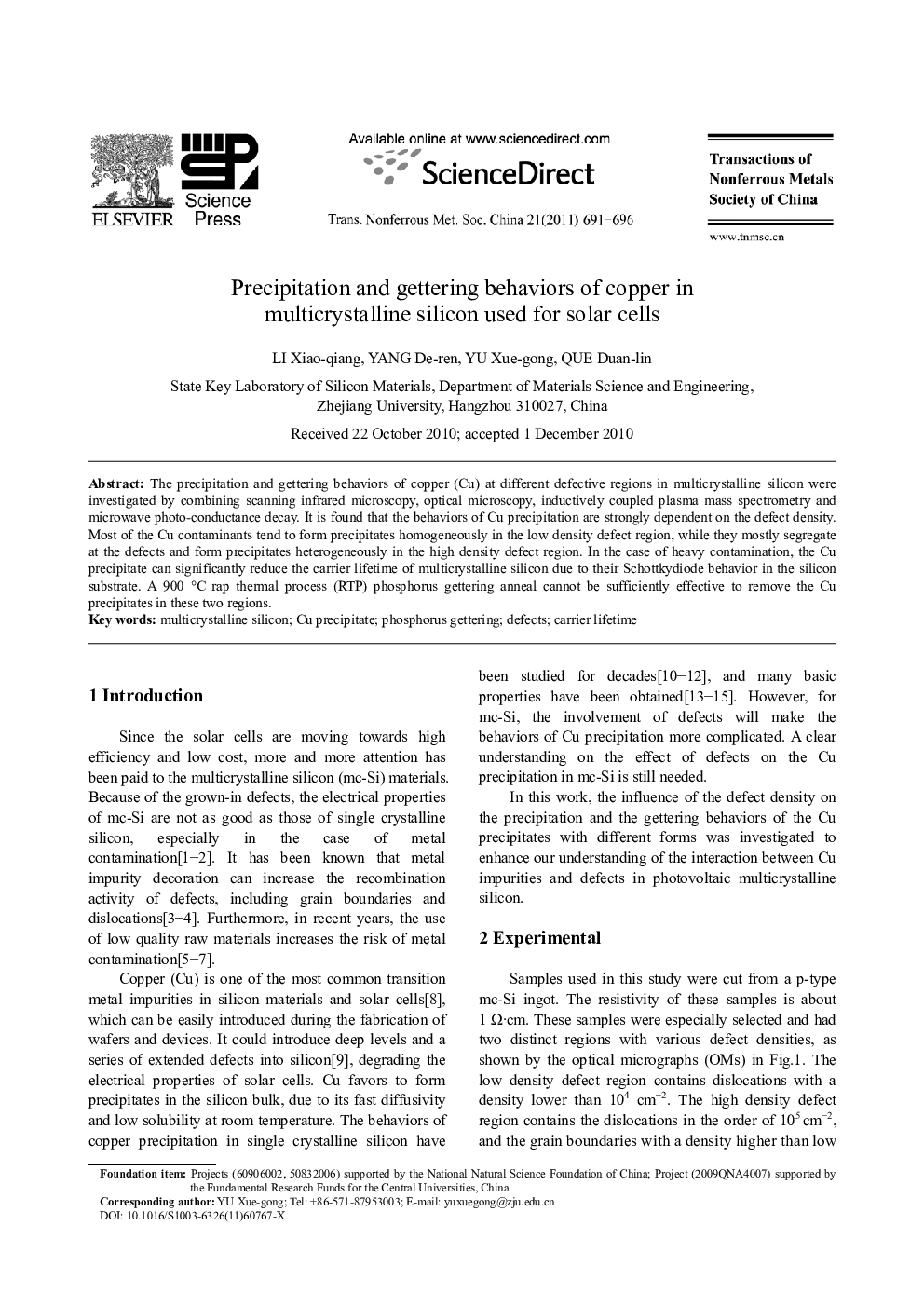| Article ID | Journal | Published Year | Pages | File Type |
|---|---|---|---|---|
| 1638594 | Transactions of Nonferrous Metals Society of China | 2011 | 6 Pages |
Abstract
The precipitation and gettering behaviors of copper (Cu) at different defective regions in multicrystalline silicon were investigated by combining scanning infrared microscopy, optical microscopy, inductively coupled plasma mass spectrometry and microwave photo-conductance decay. It is found that the behaviors of Cu precipitation are strongly dependent on the defect density. Most of the Cu contaminants tend to form precipitates homogeneously in the low density defect region, while they mostly segregate at the defects and form precipitates heterogeneously in the high density defect region. In the case of heavy contamination, the Cu precipitate can significantly reduce the carrier lifetime of multicrystalline silicon due to their Schottkydiode behavior in the silicon substrate. A 900 °C rap thermal process (RTP) phosphorus gettering anneal cannot be sufficiently effective to remove the Cu precipitates in these two regions.
Related Topics
Physical Sciences and Engineering
Materials Science
Metals and Alloys
Authors
Xiao-qiang LI, De-ren YANG, Xue-gong YU, Duan-lin QUE,
